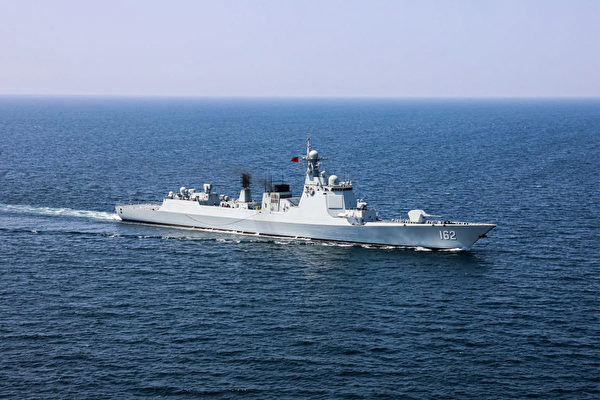China and Russia have ramped up their joint military activities in the South China Sea, causing concerns among countries like the United States, Japan, and the Philippines. This move could potentially escalate worries among Western nations about alliances with authoritarian regimes.
According to reports from Chinese state media, China and Russia have commenced live-fire naval exercises in the South China Sea, marking the first joint military drill in this contested maritime area. This reflects the ongoing strengthening of military cooperation between the two countries in recent years.
The Chinese state media reported that naval formations from both countries gathered in a military port in Zhanjiang, Guangdong on Sunday (July 14) and began a series of military exercises from Monday to Wednesday with the theme of “joint response to maritime security threats.”
The joint exercises between China and Russia include coordinated reconnaissance and early warning operations, as well as live weapons deployment. Additionally, according to international media reports, one of the focal points of this exercise was the simulated destruction of an enemy submarine. The Russian Navy’s Pacific Fleet did not provide specific details about the “enemy submarine,” but considering the exercises took place in the South China Sea, the target could be interpreted as a U.S. submarine.
Simultaneously on Sunday, another joint naval formation from both countries entered the South China Sea to conduct the fourth round of joint maritime patrols between China and Russia.
Earlier this month, Chinese and Russian navies conducted patrols in the Western Pacific Ocean and the Northern Pacific Ocean. The current activities have shifted to the South China Sea.
In addition to patrols, the naval forces of both countries have carried out on-site inspections, detainment exercises, and helicopter landing drills.
The joint actions of China and Russia come during the period of the U.S.-led “RIMPAC 2024” multi-country military exercises (June 27 to August 1), drawing significant international attention. In response, the Japan Maritime Self-Defense Force has deployed ships and aircraft to closely monitor the movements of China and Russia.
According to information released by Japan’s Joint Staff Office (JSO), surveillance equipment from China and Russia has been operating near Japan in the past week.
The Philippines also stated that they are closely monitoring China’s latest actions in the disputed waters. Roy Vincent Trinidad, spokesperson for the Philippine Navy, mentioned during a press conference on Tuesday (July 16) that the Philippine Navy is closely observing the China-Russia joint exercises in the region.
Trinidad said, “The recent exercises conducted in Philippine waters exceeded our exclusive economic zone. Nonetheless, we continued monitoring and are aware of their activities.”
Previously, military cooperation between China and Russia primarily focused on the Sea of Japan and the East China Sea. The recent activities in the South China Sea were a result of the meeting between Chinese leader Xi Jinping and Russian President Vladimir Putin in Kazakhstan on July 3. Both leaders reaffirmed their alignment on issues concerning the South China Sea and Taiwan.
Putin stated, “Russia supports China in safeguarding its core interests and legitimate rights, while opposing external forces interfering in China’s internal affairs and meddling in the South China Sea issue.”
China regards the South China Sea as a core interest, with its proclaimed “nine-dash line” claim covering a vast portion of the sea. Consequently, China has ongoing territorial disputes with countries including the Philippines and Vietnam in the South China Sea.
In recent months, Chinese coast guard vessels have repeatedly fired water cannons at Philippine ships and obstructed the resupply missions of Philippine maritime outposts.
Last month, a Chinese coast guard vessel intentionally collided with a Philippine Navy ship near Ren’ai Reef (known as Ayungin Shoal in the Philippines). In that incident, the Chinese coast guard seized 8 M4 rifles, navigation equipment, and other supplies from the Philippines, injuring several Filipino sailors, with one losing his right thumb.
With tensions escalating, U.S. officials have reiterated the solid obligation of the U.S.-Philippines Mutual Defense Treaty to Beijing.
In response to Chinese threats, Japan and the Philippines signed a Reciprocal Access Agreement (RAA) on July 8, enabling the mutual entry of military forces for joint exercises in each other’s territories, allowing the Japan Self-Defense Forces and the Philippine military to conduct joint exercises in the South China Sea and other regions.
In April of this year, the leaders of the U.S., Japan, and the Philippines held a trilateral summit in Washington, expressing “serious concerns” about China’s activities in the South China Sea. According to a joint statement, the three countries agreed to conduct joint naval exercises in the Indo-Pacific region.
Additionally, in May, countries like Australia announced their plans to conduct more maritime exercises in the South China Sea and other areas.

